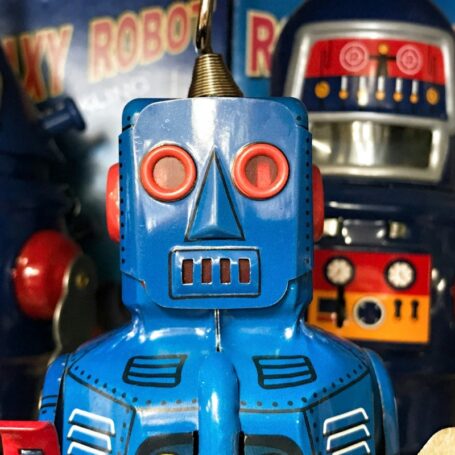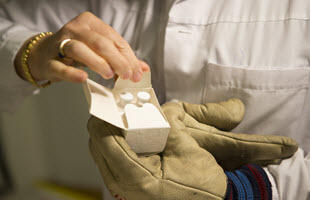In Defense of Uni-disciplinarity

A graphical depiction of how scientific disciplines are interrelated based on citations among specialist journals. Click to enlarge. Bollen et al. 2009, CC BY-SA
Nearly all management speeches within academia champion interdisciplinary research. They talk about the importance of dismantling “silos” and getting people to work together.
Closer to the coalface you’ll hear the same thing from some of the workers. But you won’t hear it from all the scientists; many scientists do work in silos and simply ignore the requests to work with others.
Why is this and should we do something about it?
Many scientists actually like silos. This is not because scientists are anti-social introverts – in reality, very few are. It is because deep, disciplinary-specific knowledge and a critical mass of like-minded researchers are sometimes absolutely essential to tackling sophisticated problems.
Silos can be very effective. While cooperation creates synergies, particularly in creative domains in both science and arts, individual freedom can be just as important. Forming a committee doesn’t make for better poems and big teams don’t always ask better scientific questions.

This article by Merlin Crossley originally appeared at The Conversation, a Social Science Space partner site, under the title “Science in silos isn’t such a bad thing”
What about the big problems?
But aren’t we told that the big problems of today – energy, health, the environment – require interdisciplinary teams? It is true that implementing remedies requires teams, but investigating the scientific basis of the problem is often done best by a range of highly specialized staff working in depth on well-defined questions in one discipline.
Specialization and compartmentalization are critical to excellence. The human body is organized into specialized organs for a reason, and it could not operate if everything were blended into an interdisciplinary soup.
Relatively few political leaders and high-level managers talk about this aspect of how science works.
On top of this, most scientists are trained to be independent, to focus and to be persistent. If you stick with any good problem and dig deep enough, you will eventually find something interesting. It is like digging a well: you have to keep going, don’t get distracted, don’t go sideways.
The biggest trap for a young scientist is to jump on the back of tempting new bandwagons. Jumping onto other people’s bandwagons virtually guarantees that you will never be the first to discover anything new. Instead, at best you’ll be second.
One good metaphor involves dogs and cats. Both hunt feral pigeons. Dogs run in packs after them in the park and each time one lands, they chase it. They never catch pigeons. Cats on the other hand sit behind a tree in the garden and wait – and they are deadly.
So we need to acknowledge and even celebrate dedicated silos. We should congratulate those who make it to the top of their disciplines.
How to support new interdisciplinary research
Next we should encourage top researchers to look out across the intellectual landscape and make connections to deep thinkers on the top of other silos. We should build bridges rather than try to break down silos.
There are two simple ways to build bridges. The first is via shared technologies. Top researchers need sophisticated infrastructure and they share it readily.
The Australian Research Council’s Linkage, Infrastructure, Equipment Facility (LIEF) grants are important, and the Howard government introduced the National Collaborative Research Infrastructure Strategy (NCRIS). This was a visionary step.
The facilities are run by top scientists who collaborate widely, providing access to researchers from any institution or discipline. Shared infrastructure is efficient as it can be run around the clock, be maintained by highly skilled technicians and be upgraded as required. It also links people into teams.
In contrast, local and siloed infrastructure is difficult to run, maintain or make available. Shared infrastructure is a great success in Australia, and I hope the government will succeed in finding a way to support the long-term continuation of NCRIS.
Eyes on the prize
A second way to build bridges is to offer grants or prizes or missions to bring people together. Some people complain that managing academics is like “herding cats.” But others will tell you that herding cats can be achieved by putting food in the desired places.
At UNSW we have run a grant scheme that provides small amounts of money to get people together and then rewards them if their interdisciplinary project bears fruit.
But surely there are times when large interdisciplinary research is important? Big groups can do big science. Society faces big challenges and governments have a responsibility to tackle them in part through mission-directed research.
This is true, but it is important to recognize the special challenges here. Failures in collaborative projects are often blamed on the inability of people to work together, but there are usually underlying structural problems. The most common problem is the sustainability of funding.
Initiatives are sometimes seeded and then expected to become self-sustaining. This is not always realistic. For example, the National Information and Communication Technology Australia (NICTA) has been a great success and has had excellent leadership, but it is hard to become self-sufficient when you are intent on exploring and taking really big long-term risks in order to get big rewards.
Big science is vulnerable because it costs a lot and it is easy to shave off the budget whenever things get tight.
The other problem for big science is the “allocation of recognition” challenge. In small teams those who achieve are recognized, but in large organizations it is often difficult to recognize all key contributors. Sometimes it is hard even to see the contributions. Big organizations, like the CSIRO, are especially vulnerable to budget cuts because one cannot easily demonstrate the essential role played by each and every staff member.
Australia has a proud history of investigator-driven small science and of large publicly funded big science organizations like CSIRO. Both have their merits. Some parts of our research communities actually do work best in silos, but others work better together.
Shared infrastructure invariably provides bridges between silos, and focused mission-directed research can work well under good leadership, providing the funding is sustainable.
Understanding the different ways that science works is the first step to committing to sustained funding and is far superior to repeatedly calling for efficiencies, savings, synergies or a new way of working.
So let those who work in silos climb up and look out to make alliances only when there is a proper strategy and a sustained plan for doing so.![]()
































































































